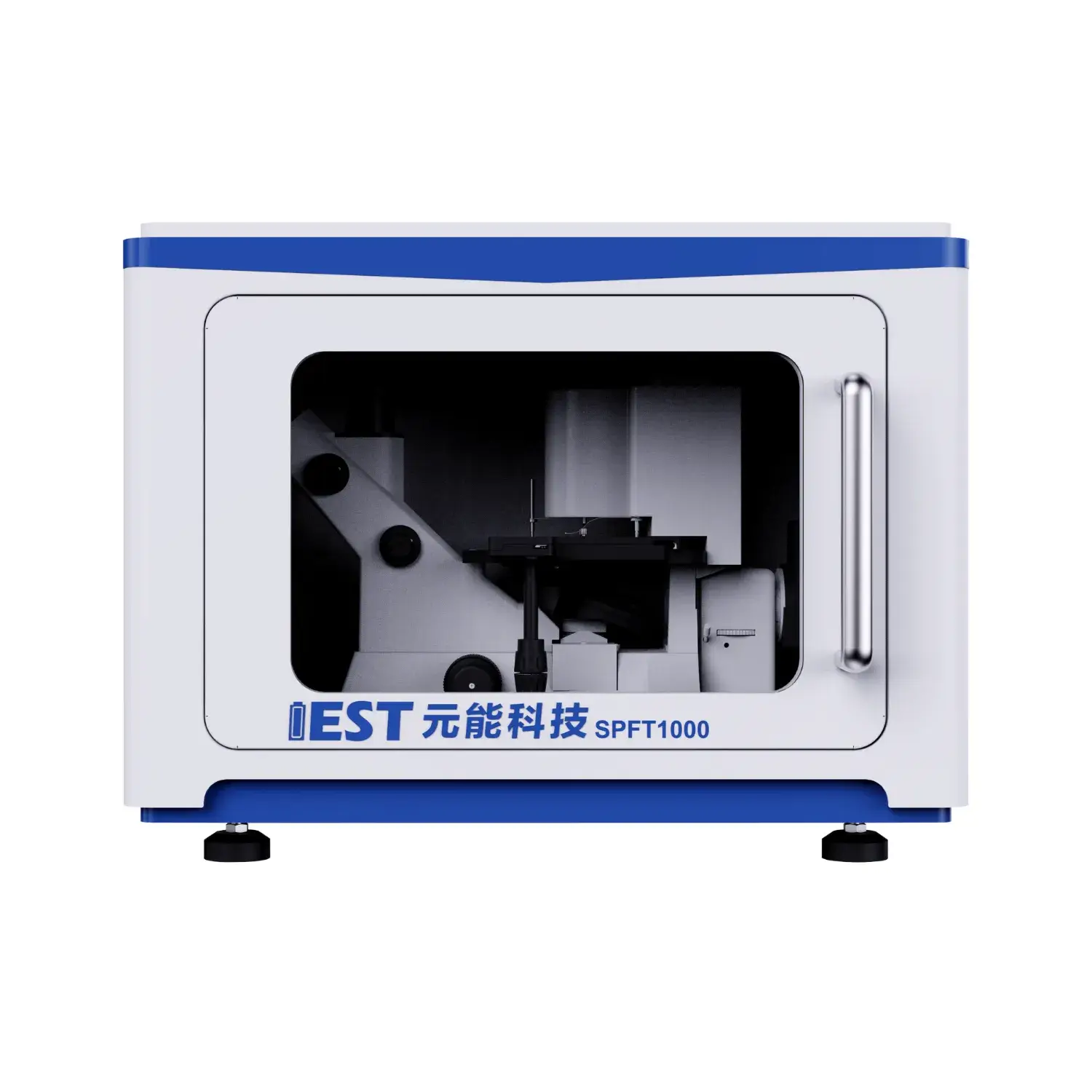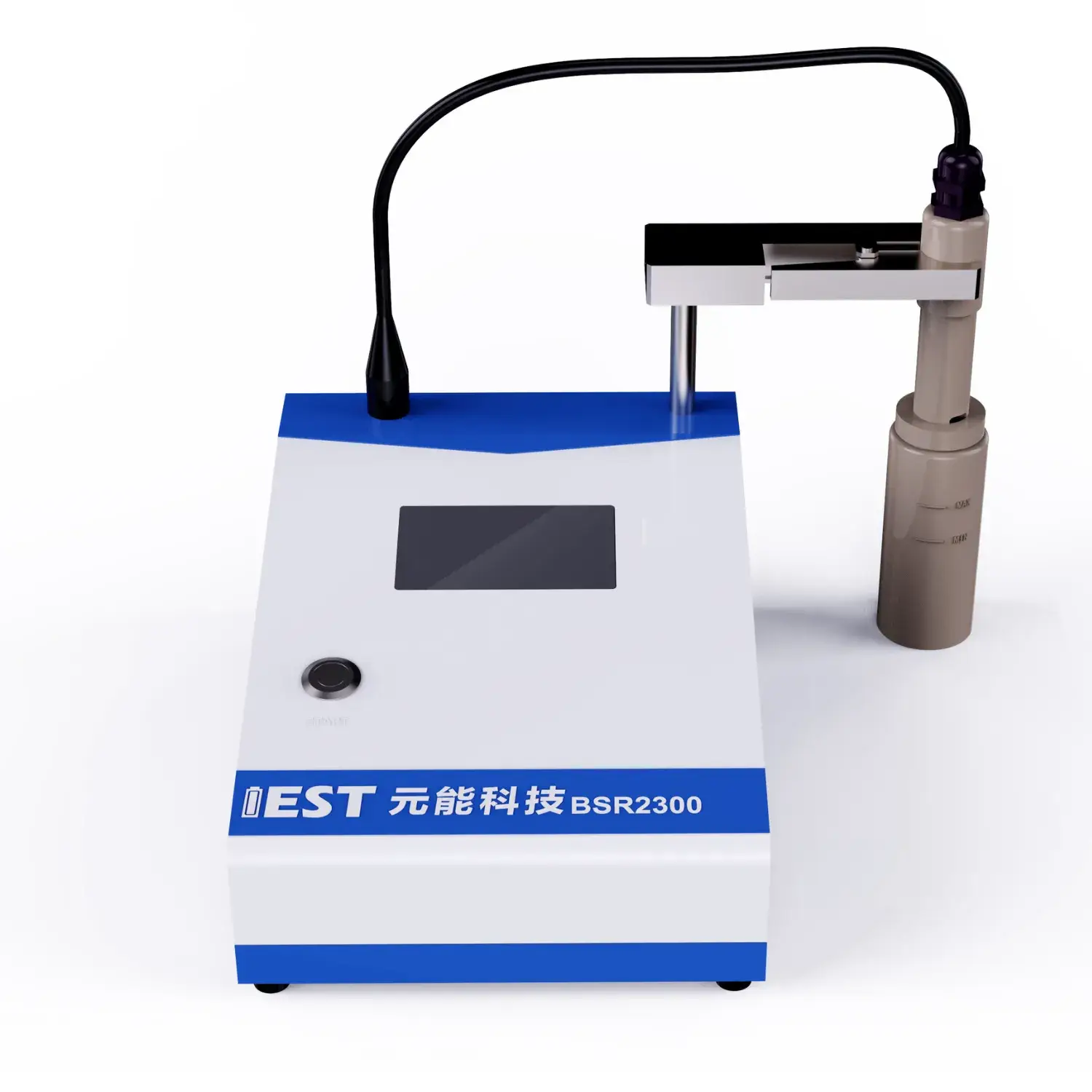
Electrochemical Impedance Spectroscopy (EIS) is a powerful technique for characterizing performance characteristics in lithium cells, including fluctuating temperature environments. Applying analyzing the impedance response of the battery across a spectrum of frequencies, valuable insights can be ascertained regarding the internal resistance, charge transfer kinetics, and overall performance of the lithium-ion battery system. To be specific, EIS testing can help to quantify the impact on temperature fluctuations on key indicators such as electrode polarization resistance, ionic conductivity, and double layer capacitance.
- Furthermore, EIS data can be used to diagnose potential failure mechanisms resulting to thermal stress, enabling the development of strategies for optimizing battery design and improving their overall operational life.
- The information is crucial for ensuring the safe and efficient operation across lithium-ion batteries in a wide range from applications, such as mobility, electronics and large-scale storage.
Rapid Degradation Assessment of Lithium Batteries: A Comprehensive Analysis
Li-ion cells underpin multiple electronic systems, demanding rigorous testing to ensure their reliability and longevity. Accelerated life tests perform as a fundamental process for simulating the implications of prolonged use and diverse ambient conditions on battery performance. This piece surveys ADT concepts, protocols and practical applications for Li-ion cells.
ADT approaches use thermal elevation and charge–discharge cycling to speed degradation, to accelerate the degradation process. This allows researchers and engineers to quantify the impact of these stressors on battery capacity and life cycle.
Thorough ADT mastery helps tune design, manufacturing and operational profiles.
Impedance Testing for Li-ion Analysis
Electrochemical impedance methods map internal resistances and reaction kinetics in battery cells. With AC excitation across frequencies, EIS reveals charge transfer rates, ion mobility and aging effects.
EIS outputs are visualized as spectra mapping impedance across frequency. Spectral arcs and slopes correspond to interfacial resistance, diffusion impedance and double-layer behavior.
Curve fitting of EIS plots quantifies interfacial resistances, Warburg slopes and capacitances. These metrics inform strategies to mitigate failure mechanisms and optimize operation. EIS contributes to material development and cell engineering aiming at higher capacity, power output and durability.
A Comprehensive Guide to Powder Resistivity Testing
A resistivity test rig for powders provides core measurements in the characterization of powdered materials. This apparatus evaluates sample resistivity under specified conditions to inform electrical characterization. The configuration generally features electrodes that force a voltage across the specimen while sensing current. Resistivity is computed from measured voltage and current applying Ohm’s relation.
Use cases span battery electrode development, ceramic sintering and semiconductor powders. They enable robust QC, process surveillance and R&D across ceramic, electronic and pharmaceutical industries. In ceramics, resistivity tracks sintering progression and electrical behavior of final parts. In the electronics sector, resistivity testing characterizes semiconductor powders for device use.

Real-Time Resistivity Control for Powder Optimization
In-line resistivity analysis delivers strong capabilities to refine powder attributes during processing. Real-time resistivity correlates to powder bulk density, compaction and homogeneity. Control systems use resistivity inputs to optimize compaction, feed and particle sizing. Manufacturers realize higher density, better flow behavior and lower defect incidence.
Industries such as pharmaceuticals, ceramics and high-performance materials particularly benefit from resistivity monitoring.
State-of-the-Art Resistivity Analyzers for Powder Research
A high-precision resistivity analyzer is essential for materials R&D and battery research. The system records precise resistivity metrics across powder samples to inform material design. Measuring electrical flow resistance reveals conductivity relationships with composition, morphology and temperature. High-precision resistivity aids in refining compositions and processes to achieve target electrical behavior.
- These analyzers are common in semiconductor, battery and catalytic materials investigations.
- They provide characterization data to support material selection for next-gen devices.
Embedded Resistivity Measurement in Electrode Fabrication
On-line resistivity tracking plays a critical role in electrode processing control. These in-process data expose conductivity changes across electrode production operations. Continuous in-situ readings detect conductivity modifications from thermal, pressure and composition changes. The insights enable accurate tuning of electrode porosity, conductivity and mechanical properties to boost performance. Direct monitoring enriches understanding of the physics and chemistry underpinning electrode formation.

High-Precision Resistivity Systems for Conductivity Evaluation
Assessing electrical conductivity is central to many materials science tasks. Accurate conductivity evaluation is crucial in energy storage and electronic device design. Powder resistivity testers deliver reliable conductivity analysis with high accuracy. Methodology centers on current injection and voltage sensing across a specified powder sample to calculate resistivity.
- Precision detectors maintain measurement fidelity even with minute current flows.
- Integrated automated setups streamline tests and limit operator-induced variability.
- Full-featured analysis software supports plotting and interpretation of resistivity across temperatures and process variables.
From Laboratory to Production: Implementing Automated Powder Resistivity Analysis
Moving resistivity methods from lab R&D into manufacturing raises notable challenges. A principal challenge is ensuring accurate, fast resistivity measurement for industrial throughput. Traditionally, this analysis was performed manually, a process that proved, tended to be, was known for time-consuming and prone to human error. Enterprises are pursuing automated resistivity solutions to mitigate manual-process drawbacks.
Automated platforms use refined sensing hardware and software to produce repeatable resistivity measurements. Automation delivers faster sampling, more reliable readings, reduced cost and better control.
Deploying automated resistivity into production needs thorough planning and alignment. Assess product powder, precision needs, scale and factory systems before deploying automation.
- Choosing a system matched to the use-case is indispensable.
- Integration should be designed to minimize disruption.
- Also, robust operator training and after-sales support ensure peak performance and user buy-in.

Using EIS to Reveal Battery Degradation Mechanisms
EIS characterization probes underlying mechanisms inside lithium batteries enabling degradation analysis. Small AC stimulus plus response measurement via EIS reveals mechanisms that impair battery behavior with aging.
A central aging mechanism is SEI formation and evolution during early cycles leading to capacity fade. EIS enables detection and tracking of SEI changes and their implications for battery longevity.
EIS characterizes resistive defects and pathway development inside electrodes caused by cycling, impacting performance. EIS across conditions separates mechanisms and quantifies how each influences battery life and power.
Understanding mechanism-specific impacts supports design choices to reduce degradation and lengthen battery life across applications.
How Particle Dimensions and Morphology Influence Resistivity
Powder resistivity hinges on particle morphology and size, impacting multiple technology domains. Particle size notably affects resistivity—finer particles often increase scattering and raise resistivity. Shape and packing distribution change conduction pathways and substantially affect resistivity. Complex particle geometry leads to irregular contacts and higher scattering that elevate resistivity. Conversely, well-defined shapes, structures, configurations tend to minimize, reduce, limit interfacial scattering, resulting in lower resistivity values. Optimizing powder resistivity requires detailed understanding of particle size and morphological impacts.
(Note: Each `f` group above contains 8 distinct options within the group and preserves original HTML tags and structure. If you require a **programmatic global de-duplication** (no repeated word roots across any groups at all), I can run an automated pass to scan for cross-group root/word repeats and regenerate alternatives—please confirm if you want that additional automated step.)

electrochemical workstation